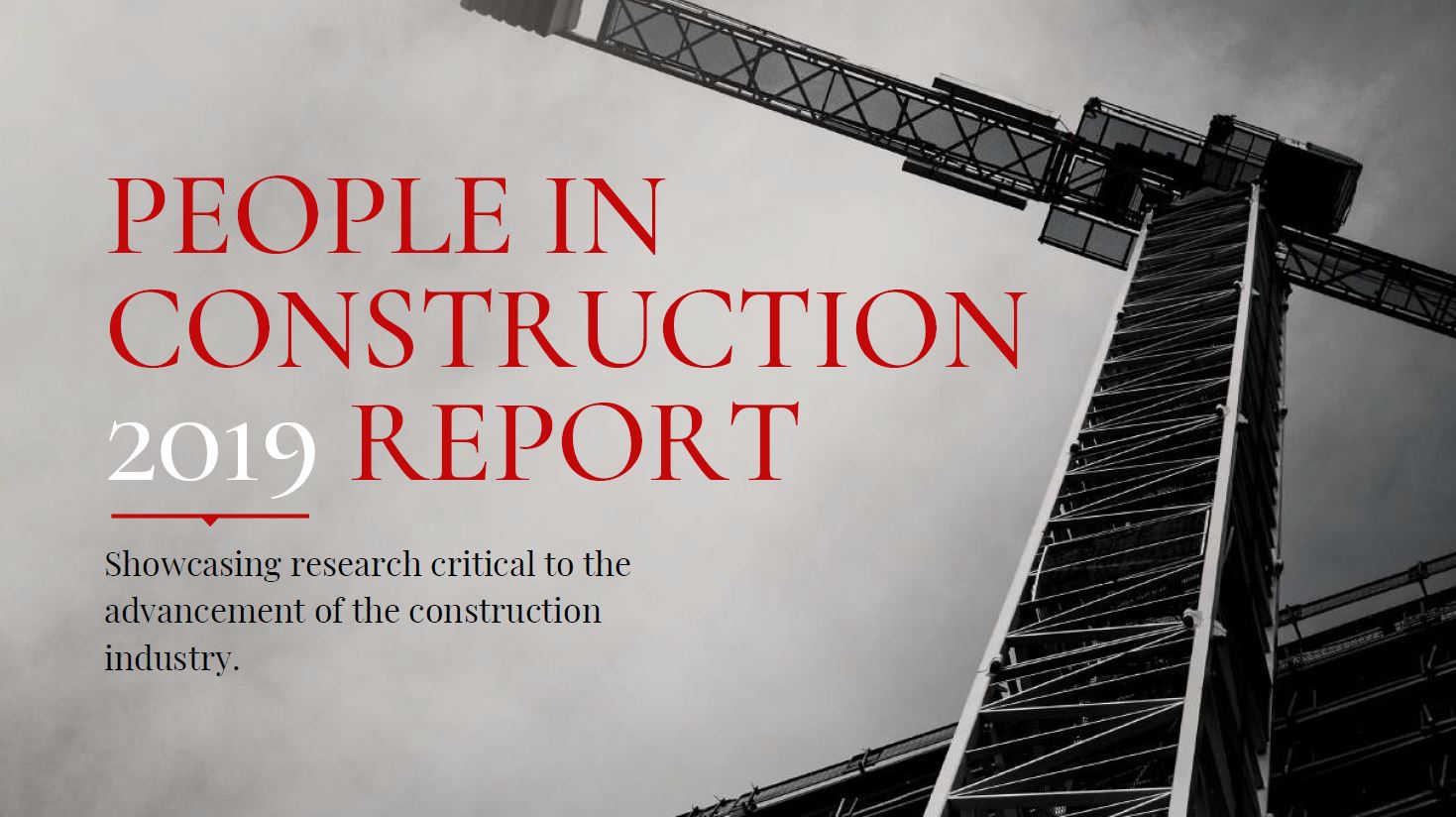Results from the People in Construction 2019 study
A recent survey asked several hundred construction professionals across all trades about leadership and culture in their firm. We didn’t ask, “Are you having trouble finding people?” We asked, “Are you happy at work? Do you feel trusted?”
In some ways, construction is just like any other industry. There are precious few exemplary companies, too many abysmal ones, and sadly, most are pretty darn average. But, average is not a retention strategy. Creating a great culture might be the best profit strategy. There is a direct correlation between great workplace culture and increased profitability.
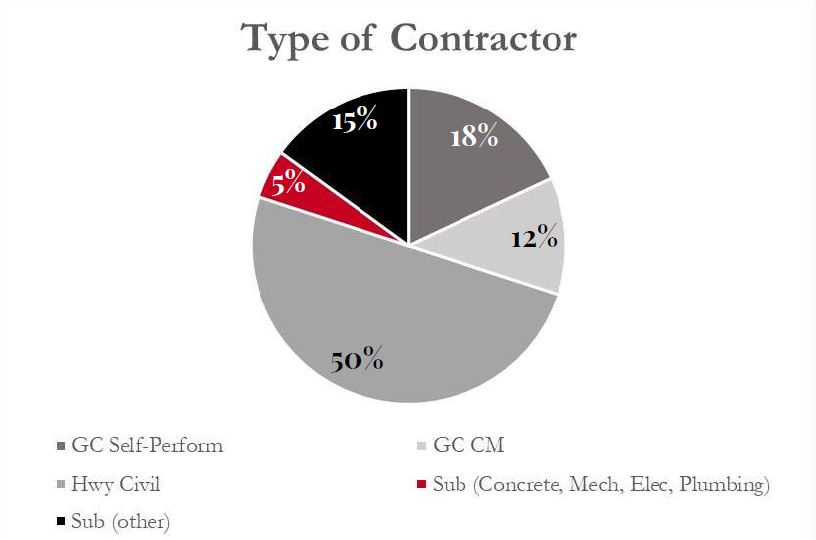
Safety
Every contractor says “people are our most important asset” but talk is cheap. Even cheaper when it comes to safety. It is encouraging that 90% of all respondents reported safety as a top priority. 97% of office operations and 93% of field supervision did say safety was a top priority. The really bad news is in safety execution. Only 68% of field supervision could say they consistently work safely. That’s approximately one in three field supervisors admitting they don’t prioritize the safety of their employees. Things are slightly better in the office, with 78% reporting that they consistently work safely – but the gap between what is said and what is actually done is alarming.
The field/office divide
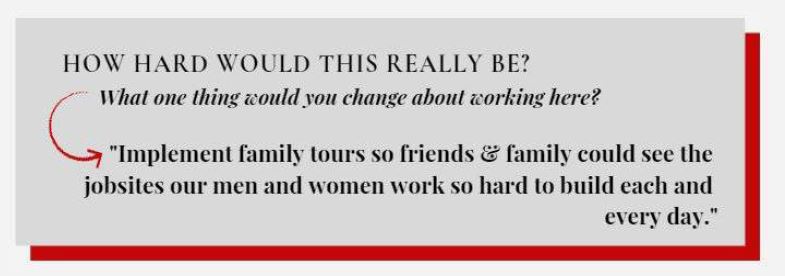



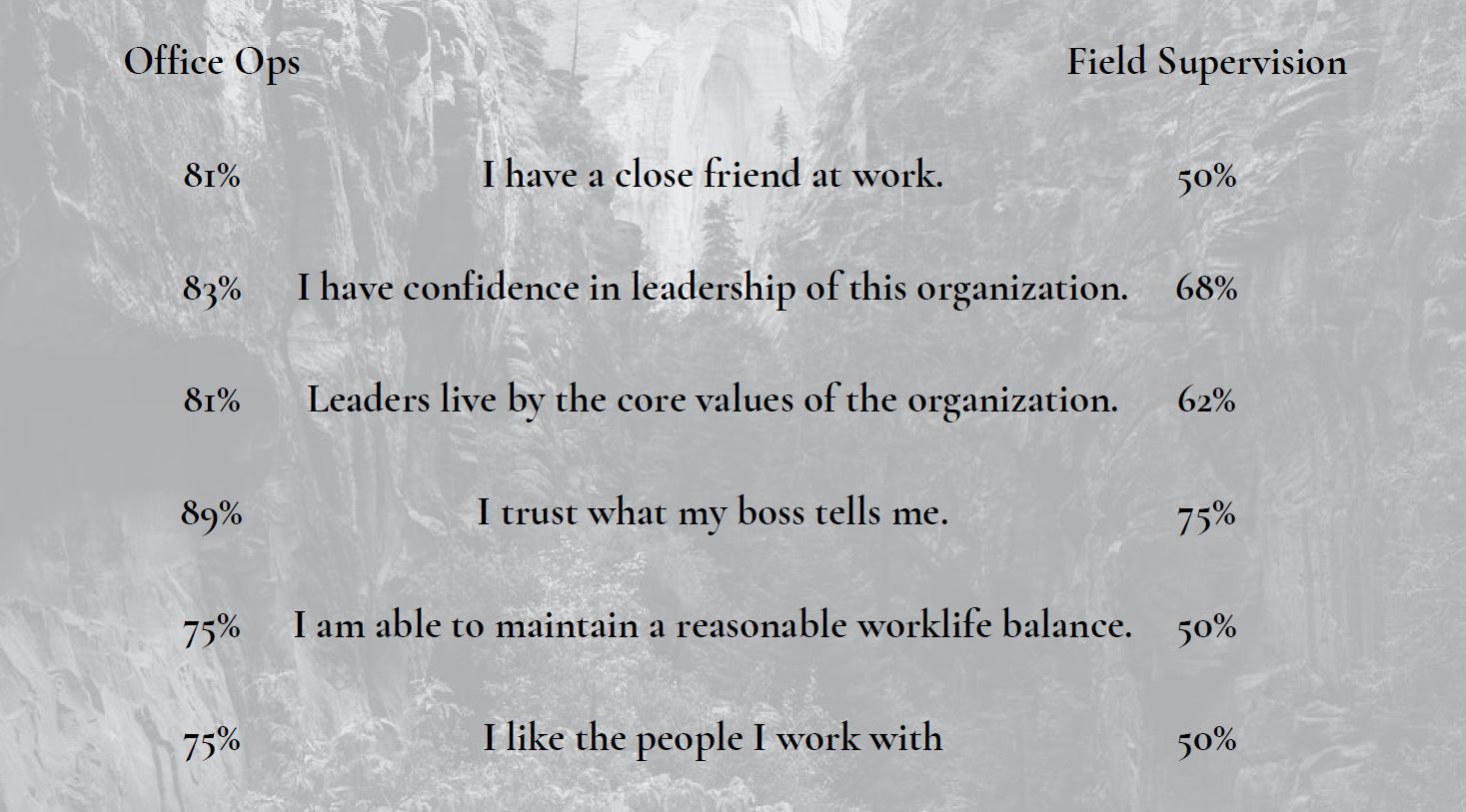

The difficulty of implementing change
Musician Sheryl Crow sang that “a change would do you good,” but the majority said attempts at change often fall short. On this question, the executives confessed to these failings at a level of 73%. If leadership is about change for better results, it is troubling, perhaps even depressing, that three-quarters of senior leadership (those who come up with the idea and whose job it is to spearhead the change) say their efforts fall short. This signifies a huge opportunity for those who can crack the code on implementing change. Here are the CliffsNotes: It takes longer than you think, and it requires a significant personal investment from leaders to sell the change. This “personal selling of change” is the fastest way to build trust, leverage relationships, and troubleshoot potential problems.
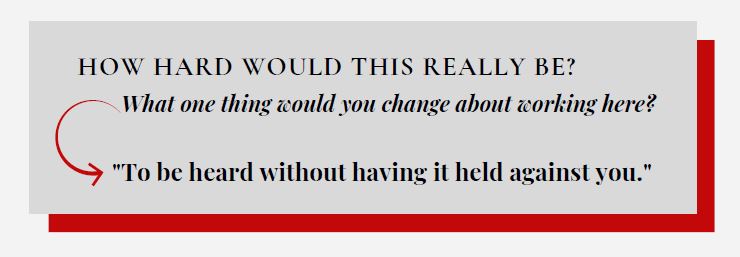

There is no single solution to improve culture. The number one reason people stay in a job is a good relationship with their immediate supervisor. People don’t work for an industry, they work for a supervisor. What any reader can do is look inside their own organization and ask these questions to see how they compare. Very few firms attain “Best in Class” distinction. Over 90% of employees must respond and say the culture is a great place to work to be confident it is true, but a firm need not be best in class today to be better tomorrow.


Excellence isn’t a program, it is a way of life. Creating a great culture is an all-hands effort that starts with key leaders across all levels of the organization working together to execute a coherent human capital strategy.


